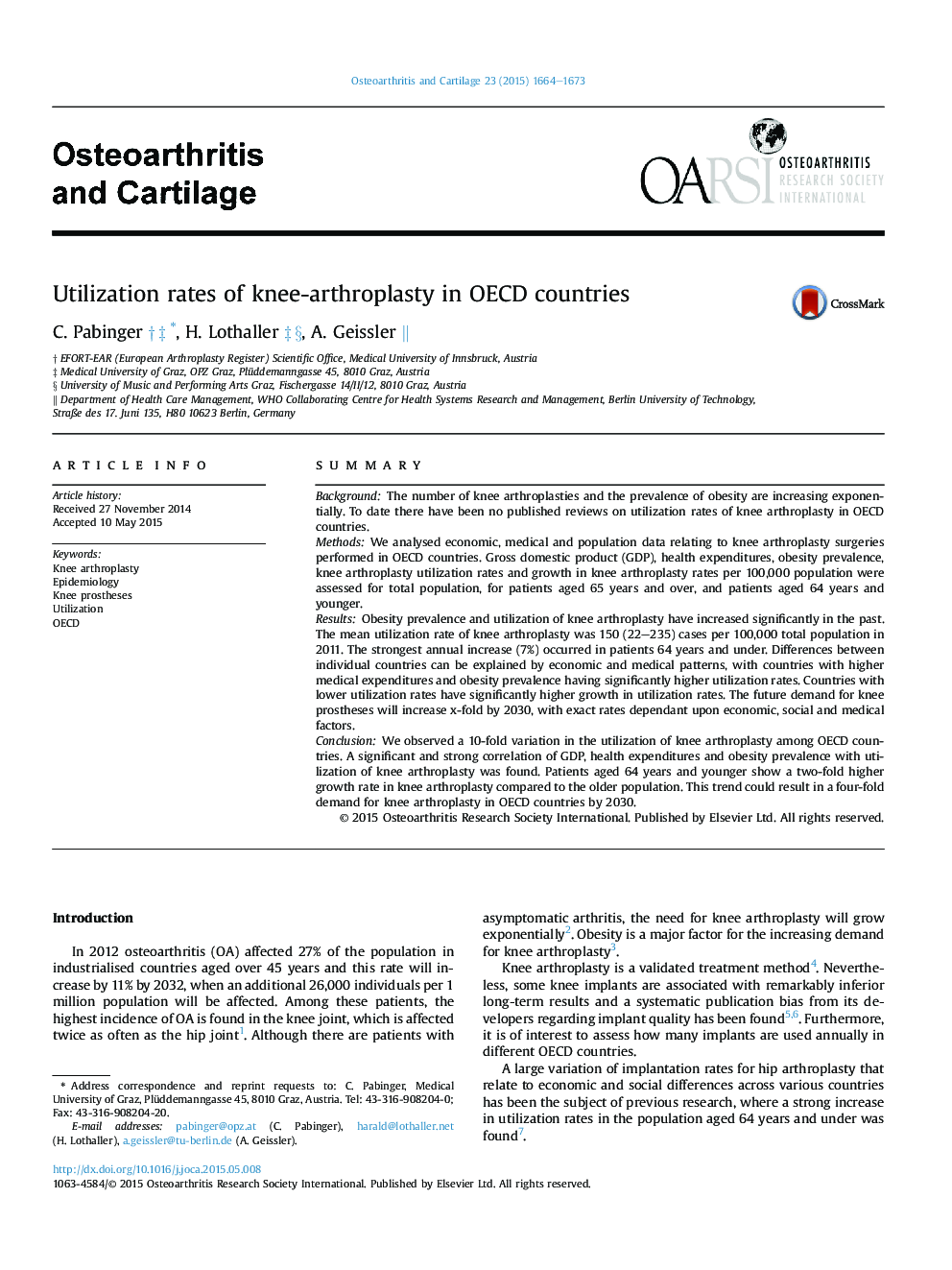| Article ID | Journal | Published Year | Pages | File Type |
|---|---|---|---|---|
| 3379160 | Osteoarthritis and Cartilage | 2015 | 10 Pages |
SummaryBackgroundThe number of knee arthroplasties and the prevalence of obesity are increasing exponentially. To date there have been no published reviews on utilization rates of knee arthroplasty in OECD countries.MethodsWe analysed economic, medical and population data relating to knee arthroplasty surgeries performed in OECD countries. Gross domestic product (GDP), health expenditures, obesity prevalence, knee arthroplasty utilization rates and growth in knee arthroplasty rates per 100,000 population were assessed for total population, for patients aged 65 years and over, and patients aged 64 years and younger.ResultsObesity prevalence and utilization of knee arthroplasty have increased significantly in the past. The mean utilization rate of knee arthroplasty was 150 (22–235) cases per 100,000 total population in 2011. The strongest annual increase (7%) occurred in patients 64 years and under. Differences between individual countries can be explained by economic and medical patterns, with countries with higher medical expenditures and obesity prevalence having significantly higher utilization rates. Countries with lower utilization rates have significantly higher growth in utilization rates. The future demand for knee prostheses will increase x-fold by 2030, with exact rates dependant upon economic, social and medical factors.ConclusionWe observed a 10-fold variation in the utilization of knee arthroplasty among OECD countries. A significant and strong correlation of GDP, health expenditures and obesity prevalence with utilization of knee arthroplasty was found. Patients aged 64 years and younger show a two-fold higher growth rate in knee arthroplasty compared to the older population. This trend could result in a four-fold demand for knee arthroplasty in OECD countries by 2030.
